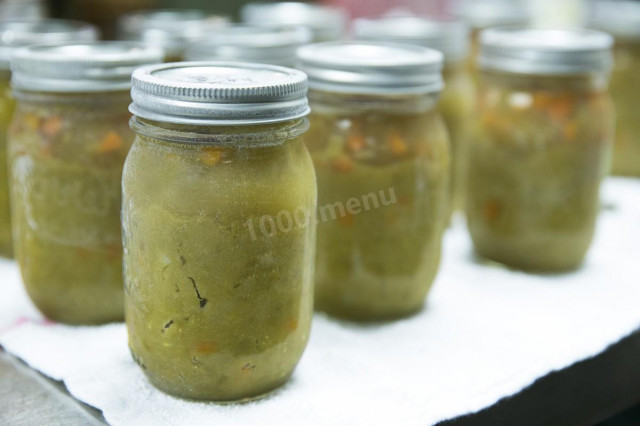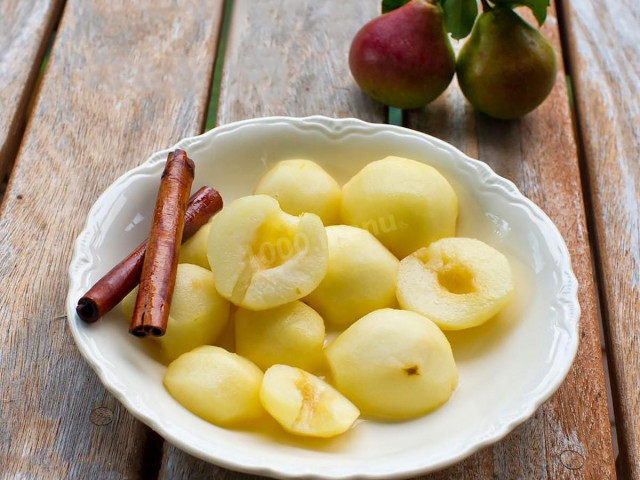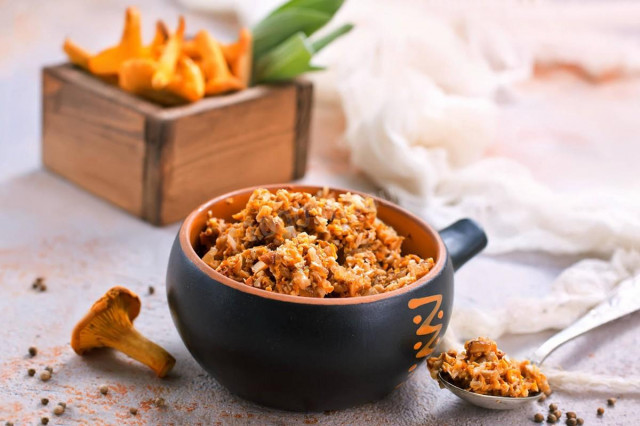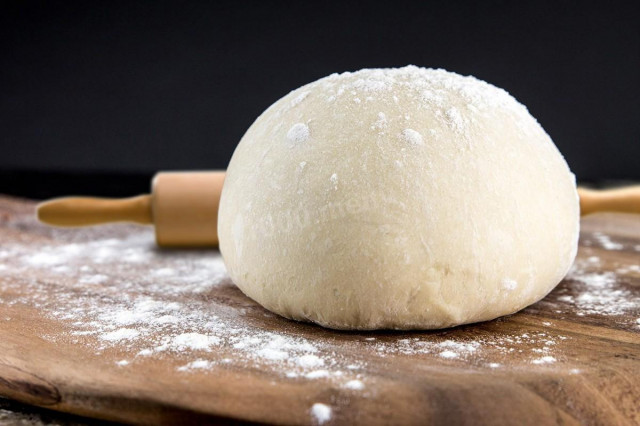Composition / ingredients
Cooking method
1. Cans for blanks are washed with soda. Dishes for workpieces are recommended to be washed without chemical detergents, since they often cannot be completely washed off. And this does not have the best effect on storage and on the workpiece itself.
2. Clean cans are sterilized over steam or in any other usual way. Some housewives have adapted to sterilize in the oven or in the microwave. Cover the lids with boiling water.
3. Peel the carrots, wash them under running water. Cut into cubes. Onions are peeled from the husk, cut into cubes. The celery stalk is cleaned, also cut into cubes. Garlic is cleaned, cut into thin plates.
4. In vegetable oil, we pass vegetables: carrots, onions, celery. This is most convenient to do in a stainless steel pan, it is important that the bottom is thick.
5. When the onion becomes soft, add garlic, bay leaf and a sprig of sage.
6. Pour the peas into a bowl, fill with water. Carefully mine, choose litter. Then we drain the water and wash the peas again.
7. Put the peas in a saucepan with the vegetables and cook for about an hour. The peas should become soft. In the process, stir to prevent burning. We extract the bay leaf and sage.
8. Fill the soup cans, roll up the lids. We place the cans in the autoclave, tighten the bolts. Pour water into the autoclave, close the lid. We wait until the temperature reaches 100 degrees on the dial. We wait 10 minutes, and then drain the water.
9. As soon as the temperature reaches 95 degrees, you can open the valve. We remove the jars, let them cool down to room temperature. Now they are completely ready for long-term storage.
Eat with pleasure!
Calorie content of the products possible in the composition of the dish
- Carrots - 33 kcal/100g
- Dried carrots - 275 kcal/100g
- Boiled carrots - 25 kcal/100g
- Dried whole green peas - 340 kcal/100g
- Crushed raw peas without seed coating - 348 kcal/100g
- Crushed boiled peas - 115 kcal/100g
- Turkish peas, dried, uncooked - 360 kcal/100g
- Dried, uncooked cow peas - 343 kcal/100g
- Dried boiled cow peas - 76 kcal/100g
- Dried peas - 322 kcal/100g
- Peas - 298 kcal/100g
- Garlic - 143 kcal/100g
- Bay leaf - 313 kcal/100g
- Ground black pepper - 255 kcal/100g
- Vegetable oil - 873 kcal/100g
- Salt - 0 kcal/100g
- Water - 0 kcal/100g
- Onion - 41 kcal/100g
- Fresh sage - 58 kcal/100g
- Celery stalk - 12 kcal/100g







